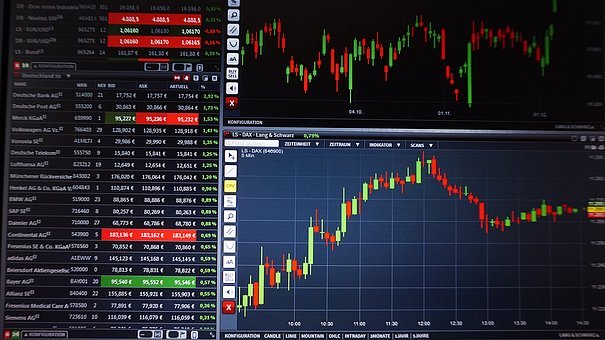B to C debt collection costs in France a nightmarish situation. The B to C debt collection costs in France were the subject of a new judicial decision dated September 26, 2019. This decision concerns the collection costs charged to individuals by the collection agencies. The decision of the Administrative Court is as follows. The collection of damages from the debtor must, except to qualify as deceptive marketing practices, be preceded by a justification of the nature and amount of the damage alleged. According to the judges the only fact for the administration to note that neither the proof of bad faith, nor that of the reality and the quantum of the damage, were reported, was sufficient to reclassify the damages and interests in debt collection costs constituting deceptive marketing practices. The burden of proof of the bad faith of the debtor and the loss suffered is on the creditor. Failing this, the collection firm is exposed to heavy criminal penalties for deceptive marketing practices. The context of this decision is related to the practices of some French recovery firms that try to make debtors pay damages by referring to Article 1231-6 of the Civil Code. The root of the problem is related to the small amount of the claims in the B to C files. To make their actions profitable some collection firms do not hesitate to claim substantial damages from the debtors to cover the debt collection costs incurred. The Court’s decision confirms that in practice and for debtors with a private person status, it is in fact impossible to claim recovery costs except to risk very heavy penalties. How to produce receipts for debts of a few tens of euros. And it is equally true that not paying small bills for an individual is a real lawless area, the debtor not in fact risk anything to pay his bills when he sings, if he decides to pay. No one is going to expose the debt collection costs of proceedings for a claim of a few tens of euros.
Tag Archives: # inkasso
Hedge Fund the rise of one whom nothing predestined to become the best manager of history.
Hedge Fund the rise of one whom nothing predestined to become the best manager of history “The man who solved the riddle of the markets” Wall Street Journal’s Greg Zuckerman’s book is the book that everyone is talking about on Wall Street. He portrays the rise of one whom nothing predestined to become the best manager of history. The mathematician Jim Simons, whose fortune exceeds 23 billion dollars, is at the origin of a UFO: the Medallion fund. Since 1988, this quantitative hedge fund has recorded an average annual gain of 66.1%, reduced to 39% after deducting its commissions. Over 20 years (1985-2004), George Soros’ hedge fund (Quantum fund) had an average annual return of 20.2%. Prize of excellence Aware of its value, the Medallion Hedge Fund has taken the highest rates in the industry, 5% of assets and 44% of profits generated through its performance. Hedge Fund typically take between 1.5% and 2% of assets and 20% of profits. Given its success, this Hedge Fund no longer accepted money from investors since 1993. In 2005, it was reserved exclusively for employees of the Hedge Fund. For Simons, this fund was to remain relatively small, less than $ 10 billion, to continue to perform well. The founder is aware of the law of diminishing returns in the financial world: the more the capital is important, the more a manager is struggling to remain as efficient.
Inconceivable In an interview with “Institutional Investor” in November 2000, the founder of Renaissance said: “Today we manage $ 4 billion, perhaps $ 7 to $ 8 billion in the future. But 70 billion, never! It is inconceivable. I am 62 years old and in the next three years I would like to pass the torch. Today the Hedge Fund manages $ 110 billion, and Jim Simons retired in 2010 while remaining involved in his company, being non-executive chairman. The Medallion has been a fantastic Hedge Fund appeal and advertising product, which has launched other funds such as Renaissance equities. He managed the increase in his assets and the change in size of his fund. “Make money when I sleep” In 1978, Jim Simons left his position as professor of mathematics at Stony Brook University to found his first Limroy Hedge Fund. Like other traders of the time, he tries to anticipate the decisions of the Federal Reserve but without much success. Yet at the time, he consulted the opinion of an economist, Alan Greenspan, who would become the president of the Fed between 1986 and 2007. His poor results prompt him to seek a trading system without human interference. “I do not want to worry about markets every minute. I want models that make me earn money when I sleep. He then embarked on quantitative management in the futures markets, particularly commodities. It speculates on potatoes, oil or pig carcasses but again the yields are random. The Hedge Fund, Renaissance Technologies, which was born in 1982, decided to move up a gear and began to build systematic and rigorous quantitative management. “There are movements and configurations in the markets that are not ‘visible to the naked eye’ by traders, but Renaissance wanted to exploit these anomalies in a systematic and rigorous way,” says Greg Zuckerman. Grey matter The fund is progressively recruiting the best mathematicians, astrophysicists, linguists, artificial intelligence specialists and computer scientists. It ensures their loyalty by allowing them to invest their bonuses in the Medallion Hedge Fund, where the average investment of employees is now around $ 50 million. Those who leave the company are subject to very strict confidentiality agreements and a non-competition clause over a very long period. It is not possible that they go into another Hedge Fund to disclose the secrets of the company.
The “home culture” of Renaissance, the antithesis of that of Hedge Fund of the time, was in three words: humility, patience, work. No star manager took positions according to his “instinct”, a word banned internally. His traders had to follow the signals of mathematical models and never take personal initiative. In fact, very few Wall Street professionals have been recruited by Renaissance who prefers to hire IBM alumni. The Medallion fund also invested some of its money in about 40 Hedge Fund. It was a way to seize opportunities that he had not identified himself while benefiting from information feedback on the markets. Data gathering. To help it achieve good market forecasts, this Hedge Fund was one of the first to recognize the importance of having as much financial data as possible. He has collected very old and good course histories. Databases often contain errors that a statistics specialist was responsible for flushing out and correcting. The fund was collecting data that was not available to its competitors: one of the contributors regularly went to the New York Fed in Manhattan to manually collect prices on bonds that were not public. Anticipating the rise of “high frequency trading” (ultra-fast trading machines), the fund invests early in technology and computers at the forefront to increase the speed of its transactions and be the first to seize opportunities. The “gross” anomalies in the markets have long since disappeared and the fund must innovate to remain efficient. “The mathematics we use can be sophisticated,” he told Institutional Investors, “but we start from data analysis, we do not have preconceived notions.” “In our business, we want action, we appreciate a certain level of volatility. In 2008, the year of the financial crisis, the Medallion fund jumped by 80%.
Business failures in France
Business failures in France. It’s an encouraging signal for the French economy: French companies are less likely to experience Business failures. Their number was 10,500 in the third quarter of 2019, according to the count made by the company Altares, down 6.4% compared to the same period last year.
This is an exceptionally low level, unmatched since 2007. The improvement is notable in construction, retail, catering and personal services. Even sectors such as business services and industry – particularly agribusiness – are experiencing a decline in Business failures.
Increase in claims of large Companies
All is not rosy however, since the average size of the failing companies increases. Thus, 73 companies with more than 50 employees went to court in the third quarter for Business failures, against 56 at the same time last year. As a result, the number of jobs threatened by these Business failures is growing. Nearly 37,300 jobs are at risk, 2,350 more than in the summer of 2018. These Companies alone account for nearly one third of jobs at risk.
“It has been several quarters since the Business failures of large Companies increase quite markedly,” said Thierry Millon, director of studies of the company Altares. Children’s clothing stores Orchestra, the airlines eagle Azur and XL Airways suffered disappointments last quarter.
Threats in the fourth quarter
Why are some large Companies experiencing more Business failures than before? “The activity has been pretty good since the end of 2015, but some companies have used their money to manage their working capital needs and not to solidify their growth. Today, with the slowdown, they are in financial difficulties, “says the expert who also notes” a degradation of payment behaviour since the spring. ” Vigilance is therefore in order. With a particular focus on the fourth quarter, marked last year by increased difficulties for some businesses and in the restoration because of the movement of “yellow vests”. However, this winter, the public transport strike on the pension reform is threatening.
Signs of weakness in the automobile and construction
Without large-scale social movement, “this year, the number of Business failures should be around 53,000, down from 2018 when France had experienced 54,700 Business failures, according to Thierry Millon. Again, this would be the lowest level since 2007. Even if it should remain low next year, the loss ratio will however hard to maintain at this low water level next year. “Some sectors are showing obvious signs of weakness. This is the case of the automobile or construction for example, “said the leader of Altares. On the other hand, companies should be able to count on the expected healthy performance of household consumption.
Secret information from a debt collection company.
The secret information of a debt collection company is a first-rate tool for assessing and analysing the solvency of a company. The proof of this is the example of a large company with over € 20,000,000 turnover whose accounts are supervised and validated by an auditor, and which enjoys a good credit rating with the rating agencies. This company filed for bankruptcy overnight. How could the credit rating agencies validating the solvency of the company be so wrong? Why has the auditor not been alerted?
In reality, this company used a large number of foreign subcontractors and did not pay their invoices changing supplier on multiple occasions, as unpaid foreign suppliers were reluctant to act because of the relative modesty of their claims.
The unpaid invoice files against this company have accumulated with a debt collection company specializing in international debts. The latter immediately suspected serious difficulties when it became impossible to reach anyone in the accounting department. Small instalments were paid irregularly. A payment order for a small fee was contested by the company’s lawyer without any indication of any reason. You did not have to be a top-flight financial analyst to understand that this company was in fact terminating payments. Judicial action for a few thousand euros caused the filing for Bankruptcy.
Another example of a well-hidden secret is the following. The subsidiary of a large group contacts a debt collection company. She wishes to entrust him with the recovery of all his 6-digit client account. As this is a company specializing in B to B services, the customer post is the main or only asset of this company. It turns out during the processes initiated by the debt collection company that most of these claims were disputed, that the disputes were serious and the position of the creditor company legally fragile. In fact, the sole purpose of the creditor was to defend the client item vis-à-vis its auditor by acting with a debt collection company to avoid a massive depreciation of this asset.
The debt collection companies so decried and vilified would have a role to play in the prevention of the difficulties of the companies by having for example a right of information strictly confidential of the organs of control to prevent before it is too late to cure.
In the secret of a debt collection company and its methods
In the secret of a debt collection company and its methods. The terms vultures, sharks, mafia methods and other “bird names” are often referred to when describing a collection society. What is it really? Do debt collection companies get rich on the backs of people by practicing unorthodox methods or are debt collection companies doing their Job only? Camille V. calls exasperated debt collection company who claims 27.90 € for an unpaid radiology bill. She has already reported several times to the medical office that the payment was made. His interlocutor Didier O. remains calm. He verifies on his screen and informs Camille V. that it is enough for him to send the proof of the transfer so that the letter of formal notice becomes irrelevant. Camille V. has already hung up and pronounces another well-sworn oath before cutting the communication. Anyone looking for recognition and consideration for his job would be better off not working in a debt collection company. The brand image of this industry is disastrous and the one who receives a letter of formal notice in his mailbox explodes blood pressure. We are looking for positive attitude! Didier O. has worked for 15 years as sedentary debt collection officer he is not a hooligan of a thick brute, he is smiling and sporty appearance. To be hired he had to meet the following criteria: calm, ability to convince and positive vision of life. One of the secrets of a successful debt collection is to receive the file very early, which greatly increases the chances of obtaining payment without having to expose significant costs. This transfer by the companies of recent receivables makes that many delays of payment are only due to negligence or absences for example for leave. A debtor who receives a letter from a debt collection company is immediately on the defensive. According to a survey, 65% of the recipients of this type of mail from a debt collection company believe that the amount claimed is not due. Telephone subscribers, energy providers or consumer credit companies rely heavily on the services of debt collection companies. It is wrong to believe that debt collection companies merely send out standard letters for which they receive disproportionate fees. Especially for trade receivables the debt collection company will have to convince the one who owes money to find an amicable agreement with his supplier sometimes see a partial debt forgiveness. Nobody has any interest in bringing legal proceedings, as the popular saying goes, a bad deal is better than a good trial. The muscular and menacing boxers are not unique to serious debt collection companies. It is in the interest of the debt collection company to settle the file as soon as possible and with the least possible inconvenience for those who owe money. On the other hand, it is abnormal that in France the individual in bad faith does not bear any costs and that for small claims (individual or professional) there is no way to obtain payment without having to bear considerable costs. In the Nordic countries the situation is different and high costs are due even for small debts. In some foreign countries (Germany) there are pressure tactics to oblige the payment of these costs. There is however a satisfied person it will be the client of the debt collection company who will recover his due.
Internet digital world European retail business facing the Storm.
Internet digital world European retail business facing the Storm. The European retail business has lived during these 60 past years several revolutions which have had a deep impact on its physiognomy and in our way of life and the society in its whole. The recent revolutions linked to the rise of internet and the digital world seem to take another step, it’s not the physiognomy of the cities which is changing anymore but the society in its whole.
Step 1: the neighbourhood businesses and the factories in Europe
Step 2: the birth of mass distribution and relocation of the production: the rise of the car industry
Step 3: the development of franchises, malls and pedestrianization of cities
Step 4: Internet and the digital world desertification of the cities
In the 50s, right after World War 2, neighbourhood businesses are rising, the factories located right next to them are running in full swing. The consumers who are low motorized appreciate having nearby shops and so came several types of restaurants and services (Shoemakers, carpenters…) in the streets of the cities. In the 60s Europe knows a new type of business, mass distribution (mostly alimentary). France will be the first country in Europe to develop it, Italy and Germany being far behind. Visionaries buy agricultural land in the periphery of the cities and develop massive shops with massive parking. This type of retail will rise and create hypermarkets of 10 000m² and more with non-alimentary shopping mall around. These giants will have a significant power on the selling price encouraging industries to relocate first in Eastern Europe (Poland, Czechoslovakia…) and then towards Asia (China, India, Vietnam) where the workforce is the cheapest. The auto industry starts on the same time a massive development as the consumers going to these hypermarkets will be in the need of buying a car. From the seventies to the 2000 and despite the oil crises, a global boom of businesses in every distribution channel is rising. Independents shop retailers first partly destroyed by the mass distribution start to join franchises. The pedestrian city centre leads to the gentrification of the independent businesses. Shopping malls with several types of businesses rise. However, the bistros and the small artisans decrease. From 600.000 in the 60s, the number of bistros in France fell to 35.00 in 2018. Investors buy commercial real estate which leads to expensive rent prices in the business areas of the cities. If in the early 2000 online shopping took its first steps, not every time in a successful way. The new giant is born: Internet and the digital world. The shops in the mid-cities are closing, the small towns are becoming bedroom communities, mass distribution loses its market shares and even the prestigious brands are shaking. Internet digital world giants such as Amazon or Alibaba are the new nightmare of the traditional businesses. In France the legislator created legal barriers to protect small businesses, stop the development of hypermarkets and reduce their blackmail to have discounts and bigger margins. But at least the legislator is helpless toward the new giants. Amazon is the biggest supermarket in the whole world even if it is fully digitalized. It is also the biggest group purchasing organization (GPO) in the world. What if Orwell’s Big Brother was in fact Jeff Bezos (Amazon’s CEO)? It is unquestionable that the typical businesses will need to invest in market niches in order to survive. For instance, some textile manufacturers are now aiming new consumers such as seniors or oversized people who are not yet comfortable with online purchases. Others fashion brands based their communication on the “Never out of stock” which means that the general products are always available. It is directly opposed to the fashion shops whose collections change every 6 months.
But what about payments? How to deal with unpaid invoices? Are the overdues also evolving with Internet digital world? Even if strong habits are still here in countries like France, we still observe a massive change of the way consumers pay. During the 50s and the 60s bill of exchanges and checks were the most used way of payment. When, Mr. Moreno invented the smart card in France everything changed. Way before its neighbours’ countries, French people will start using credit cards to the great pleasure of mass distribution discovering a new and simpler method of payment avoiding the insecurity of checks and the complicated manipulation of cash. Furthermore, it is still evolving with the evolution of our phones with which we can now pay with. Debt collection firms have also professionalized their approach, for example, the procedure by a collector in the context of home visits disappeared. Courts have gone digital, it is now possible to proceed to an online payment of your court fees with your credit card. Commercial information has gone digital as well, offering business information at extremely low prices causing the end of several investigator’s jobs. What hasn’t changed is the weight and cost of legal action in southern Europe (Spain, Italy, France, Greece, Portugal…). Lawless zones emerged concerning low-amount debts. Debt collection firms will have to adapt to this new environment. It is likely that the dematerialisation of payments will deeply change the structure of the payments especially the supplier debit which may disappear. Businesses will have no choice but search for new ways of funding. In the first days of 2019 we face a dramatic situation mainly in France for the specialized retails like fashion or shoes. There is a massive disappearing of shops due of the fact that for many different reasons the consumers change their habits. For the mid-sized producers and the small shops there is only a future if they intensify their cooperation inventing new retail ways of selling.
In an Internet digital world retail cannot act as in the sixties or seventies, the actors must invest in perspective and prospective.
Georges Vonfelt




![skyscraper-3032786__340[1]](https://www.gevo.fr/wp-content/uploads/2019/11/skyscraper-3032786__3401.jpg)

